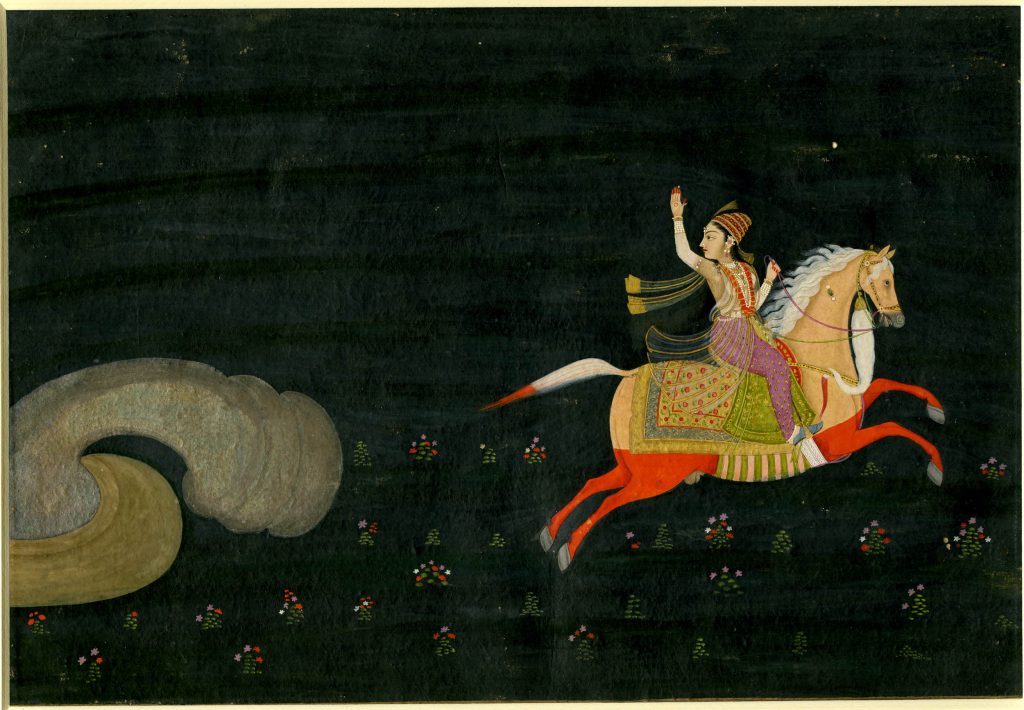
Album leaf of girl luring quicksilver from a mine with her beauty. Mughal dynasty, 1700s. Held by The British Museum.
Look at this girl. What is she doing? Riding away from the wind? Calling it to follow her?
This girl, like many in Mughal India, is a heroine. She is calling to quicksilver, a precious metal in the Mughal empire, and using her beauty to draw it out into the world. Her pose and gesture are dynamic and assertive, something we don’t typically associate with women of the 16th and 17th centuries. She is wearing a multicolored sari, known as a chunris.
Yet beneath this image are mysteries. Who is she, and why was she so powerful that she could call quicksilver? And why would she be calling quicksilver – something that was not native to India at the time? What does her power say about women of her time?
Those are questions to which we couldn’t find exact answers. The Mughal Empire reigned in India and Pakistan from 1526 until 1707, and was primarily made up of Muslims and Hindus. The Mughals were known for a centralized government that brought together many smaller kingdoms. This cultural diversity contributed to their known respect for human rights, religious toleration, and encouragement of intellectual, literary, and artistic achievements. Unfortunately, most of the accounts we have were written by Western travelers and focus on only the emperor and government. Very few mention girls, and even then only in passing to the harems that girls resided in.
Yet this image says more. Despite restrictions, girls had power and agency. What little we do know of girls from this time confirms our assumptions. Girls were educated, especially the royal girls who would learn reading, writing, and composing verses from an older woman known as Atun Mama (Lady Teacher). They also learned Persian, Arabic, Theology, and History, while others are said to have learned the Quran by heart or become avid readers. Girls grew up to do extraordinary things, like establishing their own libraries; establishing schools known as madrasas, which even the poorest could attend; or becoming patrons and creators of the arts. Yet despite these clues, very few names survive. We only found two: Nur Jahan, an Empress consort who established her own library; and Nadira Beno, a painter who made copies of Flemish etchings.
There are still more names out there. They are calling us, like this girl calling quicksilver, hoping that no matter how elusive they are, we will find them and bring them into the light.
-Tiffany Rhoades
Program Developer
Girl Museum Inc.
This post is part of our 52 Objects in the History of Girlhood exhibition. Each week during 2017, we explore a historical object and its relation to girls’ history. Stay tuned to discover the incredible history of girls, and be sure to visit the complete exhibition to discover the integral role girls have played since the dawn of time.
